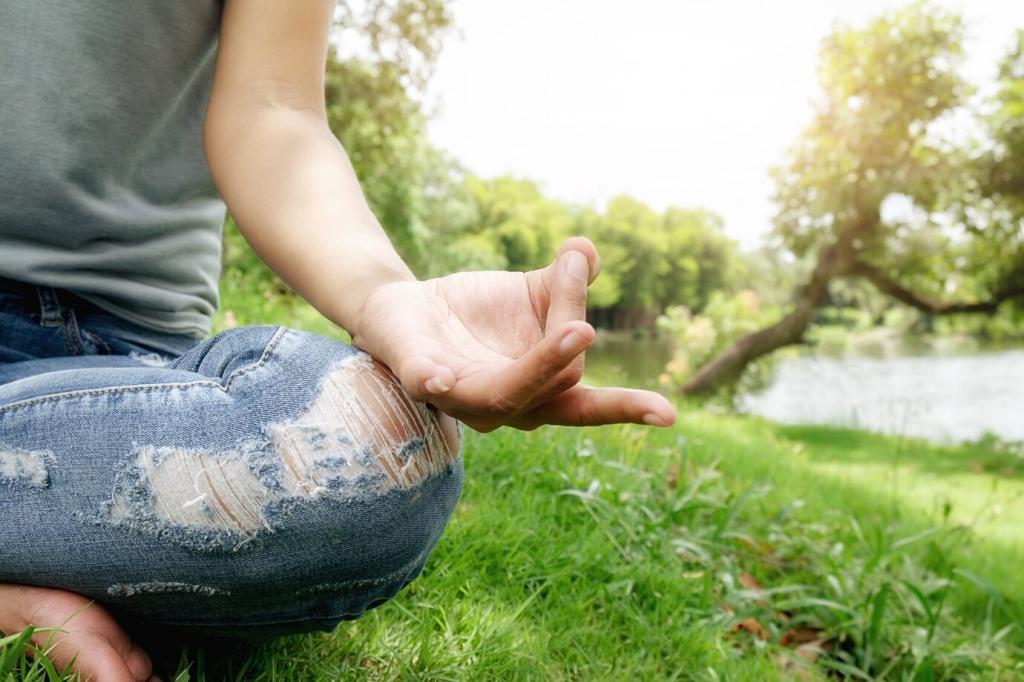
Transforming Routine Activities with Meditation Techniques
Embracing meditation within the context of everyday life offers the potential to turn the ordinary into the extraordinary. By weaving mindfulness and meditative practices into routine activities, individuals can experience greater presence, clarity, and well-being throughout the day. This approach not only enhances mental focus but also enriches experiences that might otherwise seem mundane. Discover how meditation can become an integral part of your pattern, leading to a more purposeful and harmonious lifestyle.
Integrating Mindfulness into Daily Chores
Breathing Awareness While Washing Dishes
Washing dishes offers an ideal opportunity to practice conscious breathing. By focusing attention on each inhalation and exhalation as hands move through soapy water, the mind gradually tunes out distractions and settles into a rhythm. This simple, repetitive action becomes a grounding point, allowing anxieties of the day to dissolve. The process is transformed into a form of active meditation, where senses are heightened and the present moment is fully embraced. The warmth of the water, the feel of each plate, and the sound of splashes all become cues to maintain awareness. Over time, this meditative attention can help cultivate patience and reduce feelings of overwhelm, making the chore an enriching rather than burdensome experience.
Appreciating Movement in Vacuuming or Sweeping
Vacuuming or sweeping floors can be a mindful movement meditation when performed with deliberate concentration. By bringing focus to the motion of your body, the sensation of the tool’s handle, and the rhythmic progress across the floor, what was once a routine task turns into an exercise in presence. Each movement is synchronized with the breath, grounding the practitioner in the here and now. Any wandering thoughts are acknowledged without judgment and gently redirected back to the act. This meditation technique not only helps clear the physical space but also the mental landscape, replacing restlessness with a profound sense of accomplishment and tranquility.
Sensory Attention While Cooking
Preparing meals becomes a delightful meditation when approached with mindful attention. Noticing the vibrant colors of vegetables, the sounds of chopping and sizzling, and the intricate aromas of fresh ingredients engages all the senses. The process encourages being fully present, attuned to the subtle changes in texture and flavor as each step unfolds. Cooking with awareness slows down time, transforming an everyday necessity into a sensory adventure. This meditative approach nurtures gratitude for the food and the act of nourishment itself. By immersing in the present, habitual thoughts subside, replaced by a calm joy in both the process and the meal that follows.

Elevating the Commute with Meditation and Mindfulness
Deep Listening and Environmental Awareness
Harnessing the practice of deep listening during a commute opens up a powerful meditative space. Instead of retreating into headphones or digital distractions, tuning in to the subtle symphony of ambient sounds—engine hums, footsteps, birdsong, or the cadence of fellow passengers’ conversations—anchors attention in the present moment. This type of auditory mindfulness extracts meaning and calm from an otherwise chaotic environment, encouraging acceptance and non-reactivity. By allowing each sound to come and go without judgment, inner tension melts away, replaced by an appreciation for life’s lived texture. Deep listening can help reduce anxiety, build patience, and encourage a heightened relationship with the world.
Mindful Breathing at Stoplights or Transit Stops
Any pause during a commute—at a red light, in line, or waiting for public transport—presents an opportunity for mindful breathing. By gently guiding awareness to the natural movement of breath, the commuter breaks the cycle of impatience and restlessness that often arises in waiting. Counting each inhale and exhale, or simply observing the sensation of air through the nostrils, provides a portable and sustainable meditation practice. These short, intentional practices accumulate over time, building resilience and calm that extend beyond the commute itself. Regularly applied, mindful breathing at these intervals supports stress reduction, enhances emotional regulation, and fosters a more serene start or finish to any journey.
Body Scan While Walking or Riding
A body scan meditation can be seamlessly integrated into walking or even sitting during transit. By scanning awareness from head to toe, noticing sensations without the need to react or change anything, tension that accumulates during travel is released. It becomes possible to soften muscles, adjust posture, and become aware of bodily habits that arise under stress or boredom. The gentle attention fosters a sense of rootedness and ease, turning routine movement through space into a therapeutic exercise. Over time, this mindfulness retrains both mind and body in relaxation, resulting in sustained energy and an improved mood both during and after the commute.
Mindful Work and Study Sessions
Focused Attention During Tasks
Implementing focused attention meditation while working or studying involves dedicating complete awareness to one task at a time. Rather than succumbing to multitasking or distractions, one turns full attention to the process at hand—be it writing an email, reading, or problem-solving. Noticing the urge to switch tasks and gently returning to the chosen activity cultivates mental discipline and presence. Each completed step is acknowledged before moving forward, reducing cognitive overload. Over time, this approach enhances concentration, decreases errors, and builds a satisfying sense of accomplishment. The workspace becomes a sanctuary for mindful productivity, diminishing stress and empowering a more intentional approach to professional or academic pursuits.

